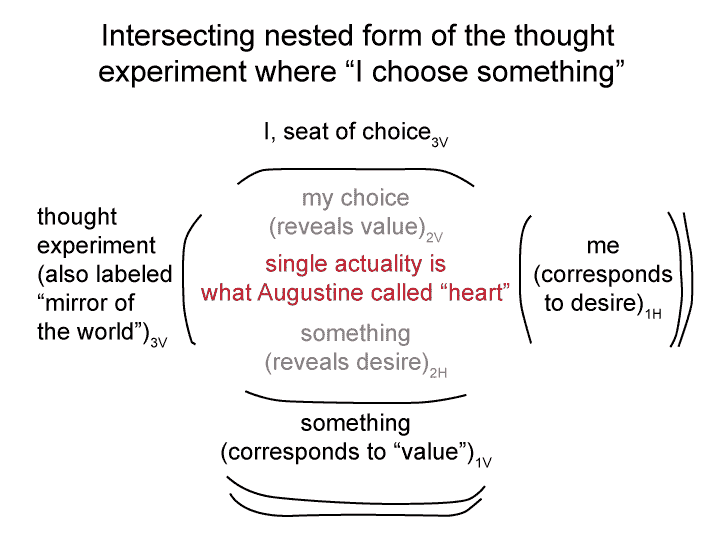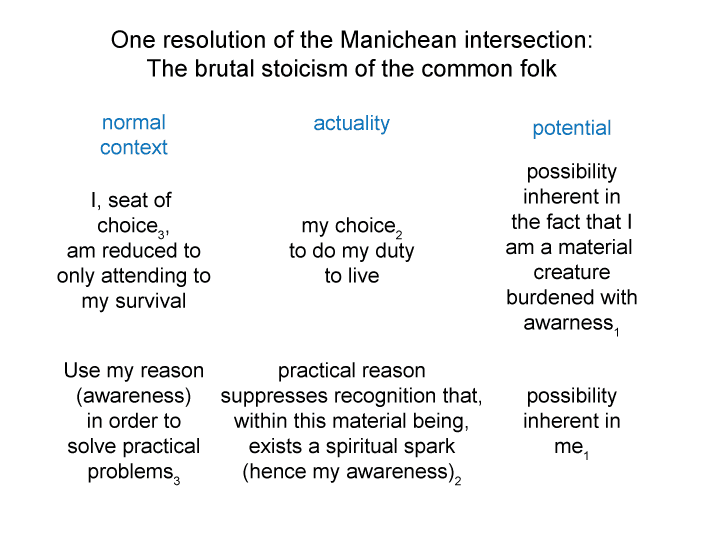Man and Sin by Piet Schoonenberg (1964) 2.3 FC
Summary of text [comment] page 82
[For Augustine, the (situation-level) flesh was redeemable because (content-level) reason could rule.
But, reason could not rule on its own.
As St. Paul implied, reason was just as corruptible as the flesh.
Reason was redeemable because it was open to the (perspective-level) gift of grace through Christ.]



